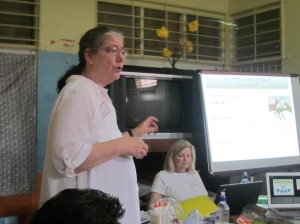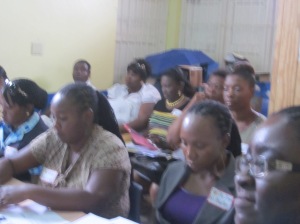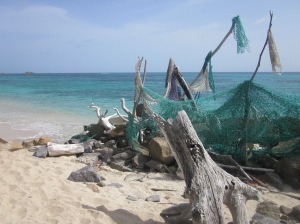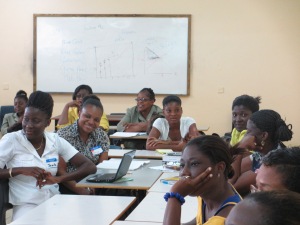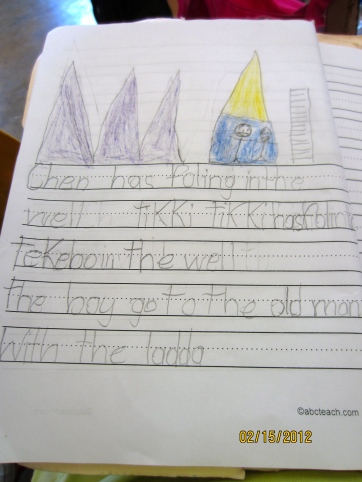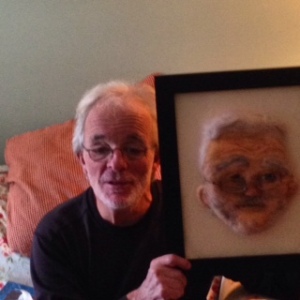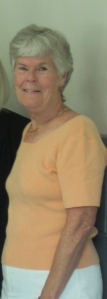In 1997 President George W. Bush supported an initiative to put an end to the reading question…what is the best way to teach beginning reading? So Congress approved monies to the National Institute Child Health and Human Development (NICHD) and the federal Department of Education to gather together a panel of experts to evaluate research t and to determine based on evidence, the best way to teach young children to read.

A panel of experts were assembled and asked to review all the research studies that has been conducted over the years. Prior to beginning this task, the panel needed to describe the criteria for inclusion of the research in the study. Then these studies were reviewed by subgroups of reviewers and recommendations were made. At the time thee findings of the National Reading Panel were disseminated, conventional wisdom advocated that the answers to teaching beginning reading skills were solved. Hurrah! The Big Ideas of Reading were developed as the basis for effective reading instruction.

The Big Ideas of Reading http://education.ucf.edu/mirc/imgs/beginningreading.gif
Many thought the reading wars were over. Not so fast! Within months of the dissemination of the National Reading Panel’s findings, many considered-experts in reading, including Pearson, Shanahan, Allington, Cunningham, Krashen, and Carbo called, “Foul.” The objected that the criteria used to include studies, actually excluded many studies on beginning reading. And yet practitioners in the field, not familiar with some researchers’ objections, embraced this “new” information and prepared to teach “phonics first,” thinking that an end to “meaning first” programs (whole language programs ) were imminent. Soon, publishing houses were reprinting decodable texts used in the 70’s and 80’s. I couldn’t believe when I saw new copyright dates on Scholastics’ SRA Decodable Readers and Merrill Linguistic Readers at the National CEC Convention, within year of the NRP publication. Barbara Wilson, ever the entrepreneur, was quick to develop classroom materials that mirrored her very successful phonics tutorial program. The format for the big ideas of reading morphed into various linear models:

Linear models of Big the Big Ideas of Reading Ideashttp://cdn.learningstaircase.co.nz/assets/Uploads/Five-Big-Ideas.png
Notice in this model that the size of each of the big ideas becomes smaller as you reach the top of the graphic; suggesting that the ideas on the bottom of the list should be given more attention in early reading program. Other linear models are far simpler. What models like these seemed to implicate was that reading development proceeded in a linear progression. So early on there was an emphasis on phonological awareness programs. Lindamood Bell was already there to corner the market; Reading Rockets, SRA, and many other resources from reputable publishing houses cranked out a variety of options to help children learn phonological awareness skills, especially the two most related to reading achievement, phonological segmentation and phonological blending. In concert with these materials were the plethora of phonics programs, new and republished programs that concentrated “cracking the code.” This seeming over-emphasis of phonics didn’t follow another Reading Panel recommendation that reading programs should be balanced.
At about this time, I became very interested in understanding the early literacy development of children on the autistic spectrum. They were so creative in their learning styles. I noticed that some children would tantrum when they were asked to complete phonics activities or to work on activities to learn the names and sounds of the letters of the alphabet. I wondered if their tantrums were related to their lack of understanding of what these activities were all about. We started to use beginning, repetitious stories with the students. We made reading more interactive, using velcro word and picture cards in simple sentences. “I like……cake. I like…pizza.” It was as though we had opened a door to the students’ understanding. Tantrums (well, many anyway) stopped and learning occurred. The children were excited. The concept that they needed to learn was concept of word and of course, all the concept of print tasks that pre-readers learn through handling books. Thus, the first adaptation of the Big Ideas of Reading:
The SIX Big Ideas of Reading (adapted Gately, 2000).
- Concept of Word: the concept that speech is mapped to print.
- Phonological Awareness: the concept that words are comprised of sounds
- Alphabetic Principle: the concept that the sounds we hear in words can be written down
- Fluency: (no concept here) ability to read effortlessly, that is automatically aids in the understanding of the text being read
- Vocabulary: the concepts that words convey meaning(s)
- Comprehension: that connected text (or reading) is meaningful
For many years I introduced this version to my undergraduate and graduate students, studying in special education. What the addition of this concept does, is to in some ways debunk the idea of phonics first. It’s not really a matter of what comes first, but a matter of where the child is when he enters school in his/her understanding of what literacy is all about. Concepts of word studies were not included in the research as there was little research done in this area. After all, most students coming into kindergartens have already grasped this idea that the speech could be mapped to print. However, with inclusion of children with disability in schools, this is an important early concept for them to discover. Including concept of word as a Big Idea of Reading is necessary to those teaching students who haven’t developed this concept.
Well, I continued to think about this and perhaps my research on first graders in Antigua was most instrumental in helping me to see that one of the things that was happening in the instruction of reading was that the linear models of the Big Ideas, seemed to allow a disregard of vocabulary and comprehension development until the students were able to “read to learn.” (Chall). I don’t mean that teachers neglected helping children learn new word meanings, but measurement of growth of literacy development became dependent on scores of DIBELS and AIMSWEB curriculum based measures, which didn’t have vocabulary or comprehension measures of any worth. So…what gets tested is

DIBELS – Phonemic Segmentation Fluency. On this task the student is asked to segment each word into sounds; the number of sounds segments within a minute is a measure of phonemic segmentation. http://usercontent2.hubimg.com/2876279_f496.jpg
Another thing occurred with the onslaught of curriculum based measurements (one minute checks on various sub skills of literacy) was the focus on fluency or automaticity of each of the skills, The big ideas were not only to be mastered, but mastery meant automaticity. Of course the need for automaticity is important, perhaps even essential in some cases, but with these one-minute measures came an over-focus on fluency. I remember reading an article about how a teacher was really focusing on making connections when reading and thinking about one’s thinking when reading. She was administering a one-minute reading passage to a student to determine her correct words read per minute (CWRM) when the student started to discuss some of the connections she was making with the passage. The teacher didn’t know whether to encourage the student to use the comprehension strategy or to tell the student just to read…a conundrum for sure. Current research indicates that students are reading faster, but the concerns of the testing community about comprehension has lead to movement of the new Core to include Close Reading.
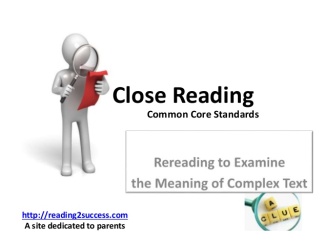
The next morph of the Big Ideas of Reading came to me as Pat Howson, a colleague of mine and I prepared some presentations we would be doing in Antigua this past June. Many of the children in Antigua come from homes where a dialect is used. When children start school, they are expected to master British English, which for some children is like learning a new language. While Antigua and Barbuda was an English colony one might think that many of the children would find learning English to be easy for them to master. Not, so, the research during my sabbatical indicated that many of the children had trouble learning English. This was partly due to the pedagogy used, which was authoritarian, based on choral responses, and the “sage on the stage” model. There was little room for discussions, peers sharing ideas or working together. So, once again I adapted the order of the Big Ideas of Reading as follows:
The Big Ideas of Early Reading (adapted Gately & Howson, 2015).
1. Vocabulary: the concepts that words convey meaning(s)
2. Comprehension: the concept that connected text (or reading) is meaningful
3. Concept of Word: the concept that speech is mapped to print.
4. Phonological Awareness: the concept that words are composed of sounds.
5. Alphabetic Principle: the concept that the sounds we hear in words can be written down
6. Fluency: (no concept here) ability to read effortlessly, that is automaticity
This version of the Big Ideas of Reading indicates that reading to students, studying words, vocabulary, multi meaning words, relationships between words, understanding sentences and story are a prerequisite for gently learning the concepts and skills of concept of word, phonological awareness, and the alphabetic principle. An integrated approach that starts young children with listening and talking about stories, stories and more stories will help them to learn about print, about sounds and about the orthography they will learn. They will learn these concepts and skills more easily and become more fluent with a such hefty background in understanding how words, sentences and stories work. They will enjoy the best of what reading is all about and when they do this within a balanced approach that calls attention to phonological aspects of the words, sentences and stories, they will be more apt to become life long readers, because they have been engaged. One of the recommendations of the National Reading Panel that got less attention was that reading should be taught with a balanced approach. In many schools and classrooms this gets lost with an over-focus on instruction was on exploit teaching of phonics approaches to reading.
When we are given “new” findings in our field, it is important to carefully examine the background of the findings, to understanding the research decisions and to avoid formulaic answers. Formulaic approaches are like putting things in boxes ….when we do this, we must always remember that the differences between the things inside one box may be even greater than the differences between the boxes.






